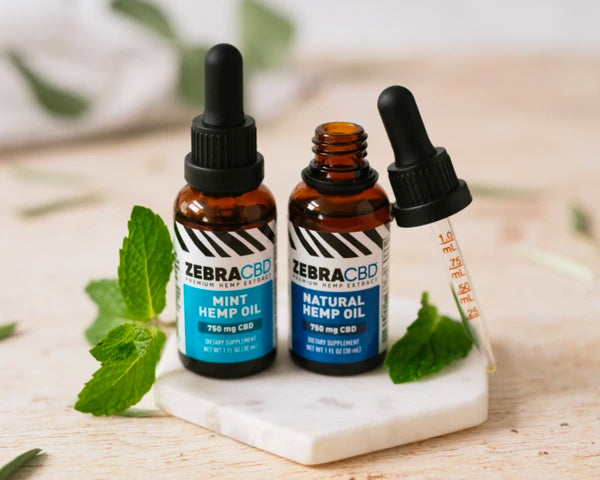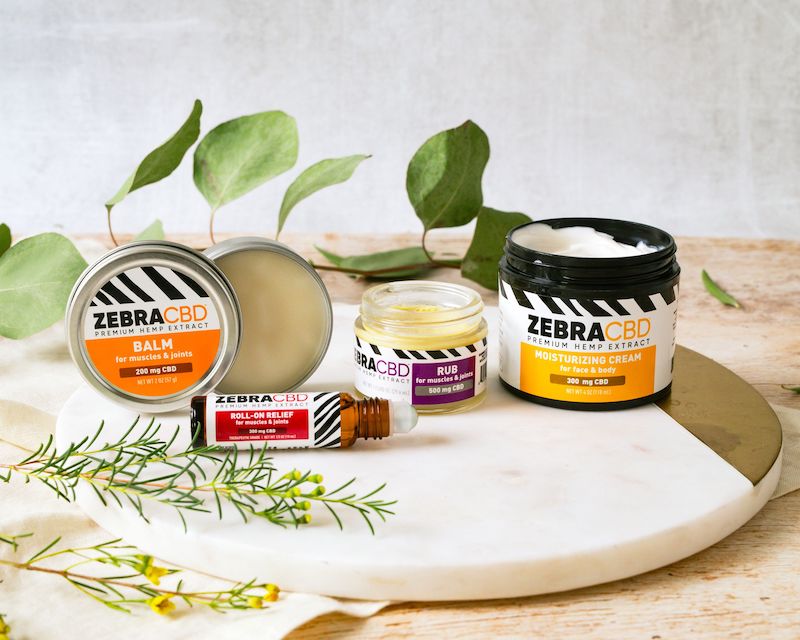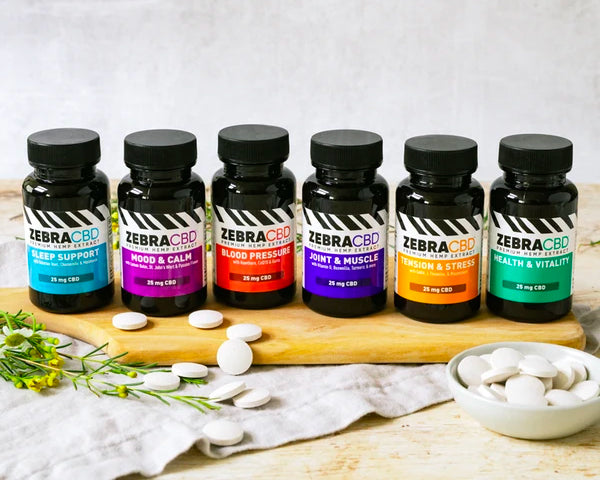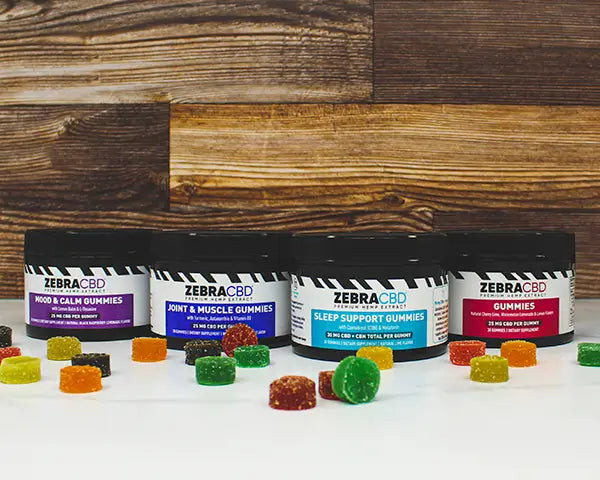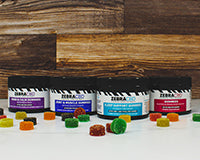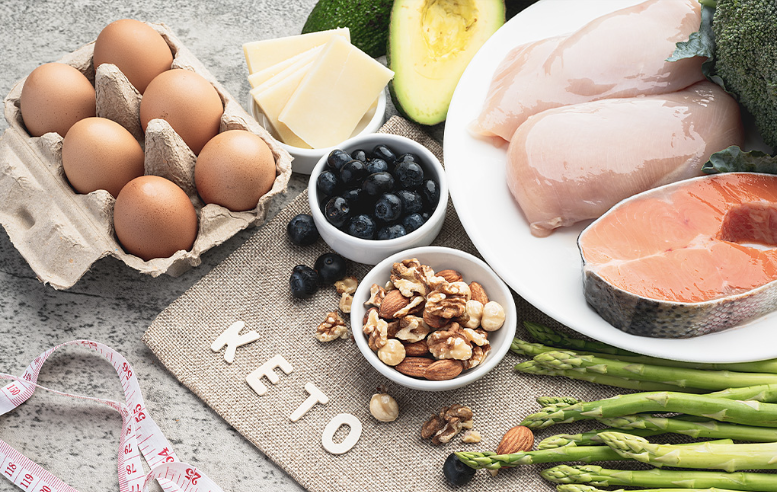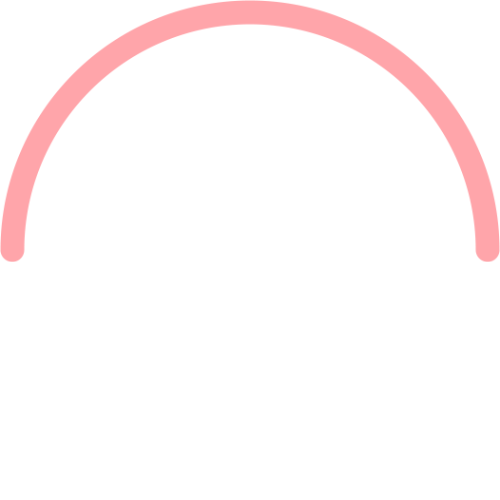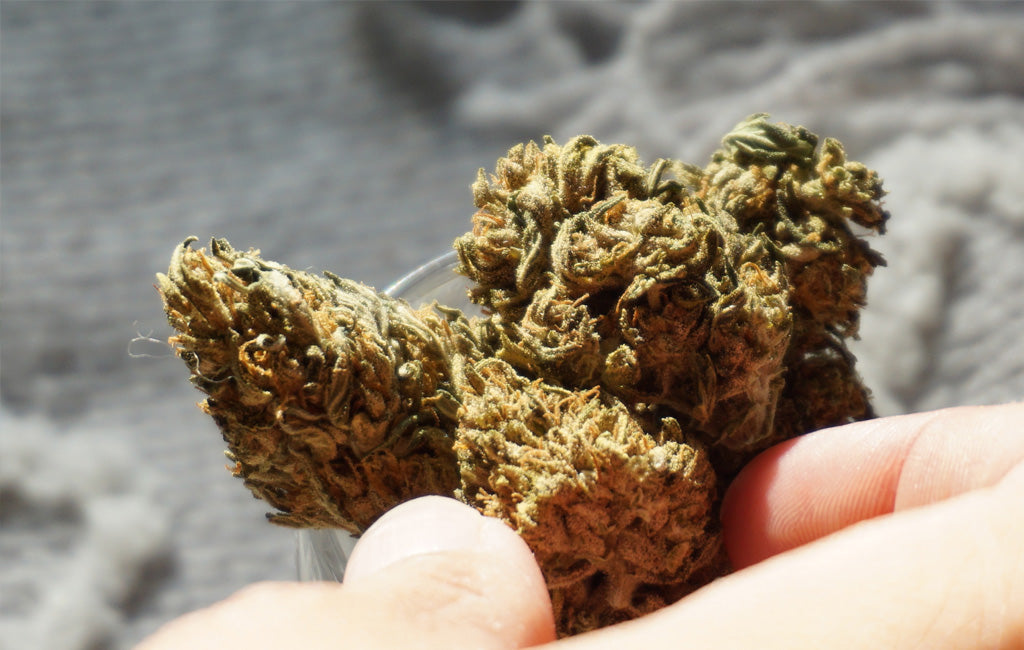
Come springtime, a bounty of florals sprout from the warming earth in rainbows of reds, purples, yellows and blues. And, although not quite as flashy, the CBD flower also emerges after the final frost.
Resembling small, bushy pine trees, CBD flower — which can also be referred to as CBD bud —is produced by the female Cannabis sativa plant. The tightly clustered, sticky trichomes cover the buds like frost to protect the flower (and deliver many potential health benefits upon harvest).
During the latter end of the growing period, clusters of buds develop. And farmers can typically harvest these flowers by day 100.
But there’s so much more to unearth when it comes to understanding what CBD flower is — let’s dig in.
The Growing Cycle of CBD Flowers
CBD flowers come from a variety of the Cannabis plant, called hemp. Legally, hemp contains no more than 0.3% of THC, unlike its close cousin, marijuana.
Some hemp plants are bred specifically to increase the amount of CBD in their buds — these are the types of plants that produce CBD flowers.
The seeds of these plants are often buried in well-drained soil that’s rich in organic materials — and they thrive outdoors in all climates, but specifically in those that are moderate. Learn more about the differences between the hemp flower vs CBD flower.
The growing cycle of a hemp plant can last anywhere from 100 to 120 days. During the first six weeks, they require regular watering, which can taper off as the plants begin to mature.
During the latter end of the growing period, clusters of buds develop. And farmers can typically harvest these flowers by day 100. At this time, the flowers are fully mature and the trichomes — which contain CBD — are at their most potent.
How CBD Flower Is Used
To be distributed to health shops and specialty CBD shops throughout the country, CBD flowers must undergo a process of drying and curing:
- Drying CBD flowers – Once harvested, the flower must be dried to remove any excess moisture. This is typically done by hanging the flowers upside down in a dry, dark and well-ventilated space. The drying process can take anywhere from a few days to a few weeks, depending on the humidity and temperature.
- Curing CBD flowers – After the flower is dry, it must be cured to further enhance its flavor, aroma and potency. This is typically done by storing the dried flower in an airtight container and letting it sit for a few weeks to a few months. During this time, the flower will continue to release moisture and develop its full potential.
Once the CBD flowers are fully cured, farmers trim the bud using shears to remove any remaining leaves or stem material. Then, they’re packaged for distribution and often vacuum-sealed to preserve their potency and freshness. You may be wondering, does CBD flower expire? In short, it can. However, if you follow proper packaging and storage, your CBD buds can last anywhere from six months to a year.
What is CBD flower used for?
While whole CBD flowers can be used to smoke or vape, manufacturers can also extract CBD flower oil from the buds. This concentrated CBD bud oil can be used in various CBD product types, including:
- Tinctures
- Edibles
- Topicals
When trying these types of CBD products, be sure to select the best CBD dosage for you.
CBD Flower Extraction Methods: What You Should Know
CBD flower oil is produced using a variety of extraction methods, including:
- Solvent extraction – Using a solvent, such as ethanol, butane or propane, manufacturers soak the CBD hemp flower to draw out the valuable terpene, flavonoid and cannabinoid compounds. The solvent is removed and the oil is further refined, leaving behind a concentrated CBD oil. This process is relatively efficient, but the type of solvent used can pose a risk as they’re often flammable.
- Natural oil extraction – Natural oils like olive oil and coconut oil can increase the bioavailability of CBD flower oil. This extraction method involves heating the CBD flower, adding oil and then adding more heat to extract the desired compounds. While this method removes the danger of residual solvents, the final CBD product may be less concentrated since these oils don’t evaporate like ethanol, butane and propane.
- Steam distillation – During this process, the CBD hemp bud is steamed to activate the compounds and release them from the organic materials. The terpene-, flavonoid- and cannabinoid-rich vapor is cooled, condensed and bottled. This method removes the need for solvents but often produces less CBD flower oil than other approaches.
- CO2 extraction – To initiate this process, carbon dioxide is ushered into a chamber, where it’s liquified. The liquid is then heated and undergoes increased pressure until it reaches a state between a liquid and a gas. It’s then added into a second chamber, which holds the CBD hemp flower. The CO2 separates the compound-rich oil from the plant material, which is pumped into a third chamber where the carbon dioxide evaporates, leaving behind highly concentrated CBD flower oil.
The Effects of CBD Flower
CBD flowers derive from hemp plants, meaning they’re unlikely to have more than 0.3% of THC present. For those looking for mild potential effects, that’s good news.
Consuming or inhaling CBD flowers will not produce psychoactive effects, such as mood swings, exaggerated euphoria, hallucinations or changes in awareness. Rather, they can facilitate a calming effect throughout the whole body and may interact with receptors within the serotonergic system to help facilitate feelings of contentment.
The CBD flower product is also largely aromatic, thanks to the terpenes found in the flower’s trichomes, which give plants their unique smells. Trichomes are hair-like structures that envelop the hemp plant’s flowers, leaves and stems. They can protect the CBD rich flower from predators and UV rays, and they can produce many soothing scents, depending on the terpenes present, such as:
- Woodiness
- Cloves
- Fruitiness
- Floral
- Earthiness
- Muskiness
Terpenes can also contribute to the way plants taste. Let’s take a look at the seven terpenes present in hemp plants:
- Caryophyllene – This terpene can have a spicy, peppery or peppermint-y flavor and is often compared to cinnamon.
- Myrcene – Musky and earthy, myrcene can taste very similar to herbal tea or cloves. It may also have fruity or citrusy undertones.
- Limonene – Just as it sounds, limonene is citrusy in flavor and can be compared to grapefruit, oranges and lemons. It may also have a hint of pine or mint flavors.
- Pinene – Pinene is fresh, herbal and resembles pine needles, rosemary and sage.
- Humulene – Like myrcene, humulene is very earthy and can taste similar to hops, ginger or cloves.
- Linalool – Floral and sweet, linalool most closely resembles the flavors of lavender, mint or cinnamon.
- Terpinolene – Terpinolene combines each unique flavor profile. Depending on the compounds present, it may present itself as floral, fruity and citrusy. Other times, it may taste more earthy and herbal.
Accordingly, smoking or ingesting a CBD flower product can produce a complex and pleasant experience that affects each of the senses.
Benefits of CBD Flower
In addition to its complex flavor and scent profiles, the CBD rich flower may also provide numerous potential health benefits once it enters the body.
The cannabinoids in CBD flowers are very similar to the endocannabinoids our bodies naturally produce. These endocannabinoids interact with two receptors — CB1 and CB2, which are found throughout the body and work in tandem with the endocannabinoid system.
This system regulates several bodily processes related to mood, physical sensation, appetite and immune function, among others. When endocannabinoids bind to CB1 or CB2 receptors, they can help regulate these processes and maintain homeostasis in the body.
CBD and other cannabinoids found in CBD flowers can interact with these receptors as well, potentially offering therapeutic benefits by modulating the endocannabinoid system, such as:
- Alleviation of physical discomfort – CBD has been shown to have analgesic properties, which means it can help relieve physical aches and inflammation. Many people use CBD flower as a natural alternative to over-the-counter medications, such as ibuprofen or acetaminophen.
- Stress reduction – CBD may also have anxiolytic effects, meaning it can help reduce nervousness and promote relaxation. This can be particularly helpful for individuals who struggle with day-to-day unease or mental anguish.
- Improved sleep – For those who spend hours wide-eyed throughout the night, smoking CBD flower or eating a CBD edible before bed can help ease your mind and body into a more restful and relaxed state.
- Anti-inflammatory effects – CBD has been shown to have anti-inflammatory effects, which means it can help with inflammation and swelling in the body.
- Neuroprotective effects – CBD flower may help protect the brain from damage and degeneration to aid cognitive function and memory.
- Appetite regulation – Since CBD interacts with the endocannabinoid system, it may play a role in promoting healthy eating habits and producing feelings of hunger.
Overall, CBD flower has the potential to offer many benefits to individuals looking for a natural way to support their health and well-being. However, it's important to note that more research is needed to fully understand the therapeutic potential of CBD flowers.
Potential Side Effects of CBD Flower
CBD flower is natural and plant-based, but it may have some side effects, depending on your unique body composition, the dose and the method of administration. Side effects can include:
- Dry mouth
- Diarrhea
- Drowsiness
- Fatigue
- Dizziness
That said, CBD flower is generally considered to be safe. If you do experience adverse
effects, consider speaking with your healthcare provider to identify potential risk factors and how to proceed. Alongside safety, you may even be wondering, is CBD flower legal? In short, yes. However, its legality may vary by state.
Harvest the Benefits of Zebra CBD
CBD flowers are an incredibly potent and potentially beneficial source of CBD that come from the female hemp plant. Once harvested, manufacturers can infuse them into a variety of CBD product types to deliver a bevy of potential full-body benefits.
To experience all that CBD has to offer, shop Zebra CBD. From CBD topicals to CBD gummies, we provide various CBD products made with high-quality, premium hemp extract.
Plant the seed for healthier living with Zebra CBD.
Source:
Oregon State University. Soil, Seedbed Preparation and Seeding for Hemp. https://catalog.extension.oregonstate.edu/em9239/html
Pharmstrong. What Are the Most Popular CBD Extraction Methods? https://pharmstrong.com/what-are-the-most-popular-cbd-extraction-methods/
Mayo Clinic. What are the benefits of CBD — and is it safe to use? https://www.mayoclinic.org/healthy-lifestyle/consumer-health/expert-answers/is-cbd-safe-and-effective/faq-20446700

